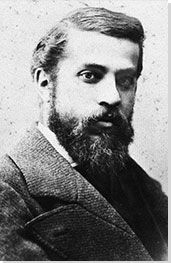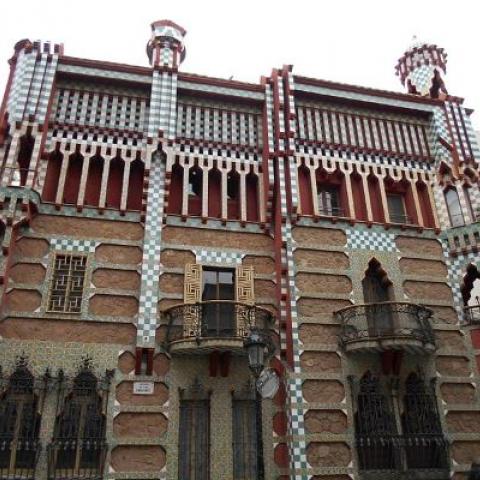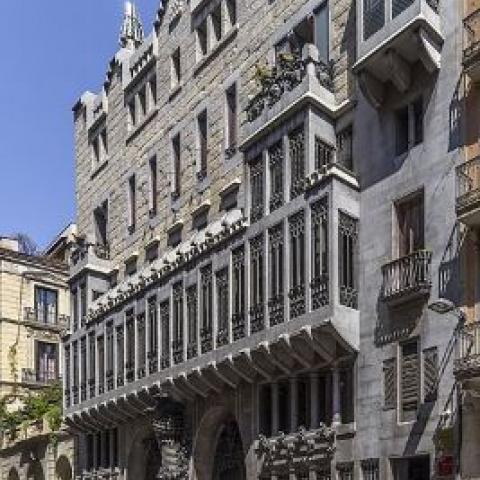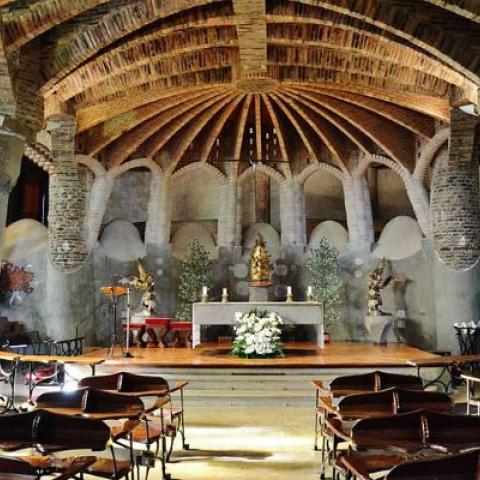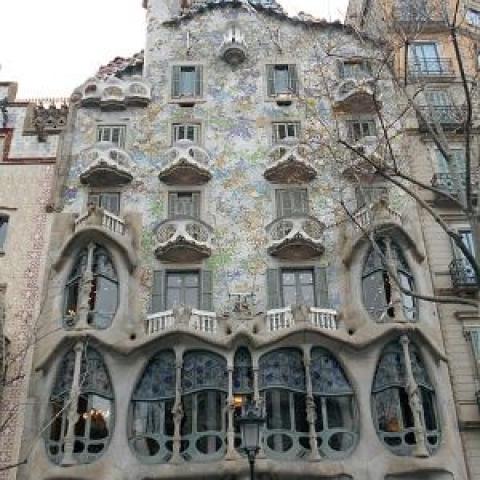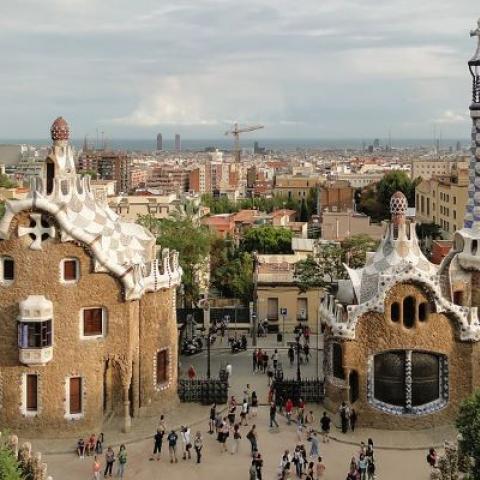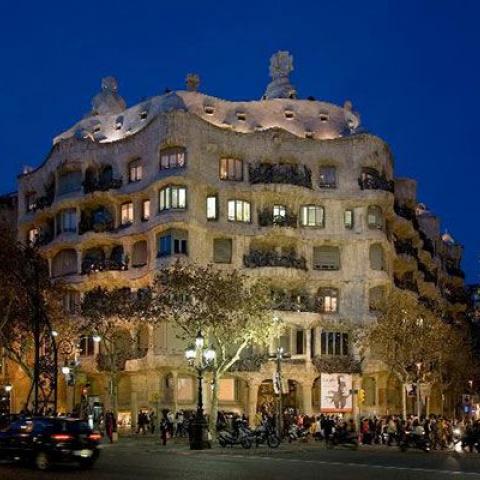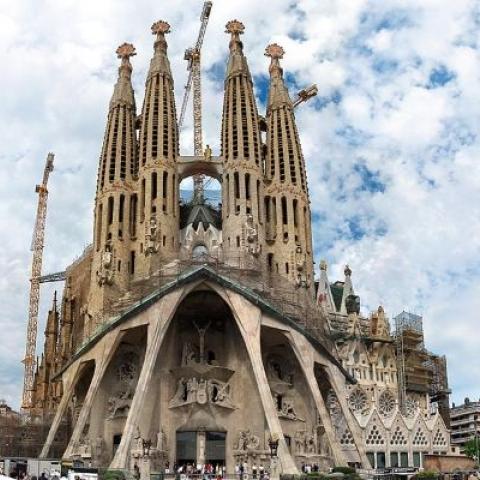Antoni Gaudí
Antoni Plàcid Guillem Gaudí i Cornet was born in Reus, Catalonia, south of Barcelona on the Mediterranean coast, in June 1852. His birthplace is the question of a small controversy, as precise documentation is nonexistent and sometimes it is claimed that he was born in the neighboring municipality of Riudoms, his paternal family's native village (though he was baptized the day after his birth in the church of Sant Pere Apòstol in Reus). He was the youngest of five children born to Francesc Gaudí i Serra, a coppersmith, and his wife, Antònia Cornet i Bertran. Gaudí's family had roots in the Auvergne region of southern France.
It is difficult for us today to believe that the most famous modern Spanish architect met his demise when, at age 73, he was run over by a tram and assumed to be an ordinary beggar for a full day before he was finally identified, too late to be nursed back to health. Yet Antoni Gaudí's pious Catholicism and devotion to a spartan regimen had come to define his character almost completely by the last decade of his life, which he devoted almost exclusively to the construction of his arguably most famous work, the Sagrada Família church in Barcelona. Over Gaudí's nearly fifty years of independent practice, he concocted and realized some of the most imaginative architectural forms in history, all of them in his native Catalonia, which have since become synonymous with the region's identity. The best-known - and most individualistic - representative of Catalan Modernisme (Art Nouveau), Gaudí has fascinated and inspired generations of architects, designers, and even engineers. Today his work attracts a global following with some of the most distinctive, idiosyncratic, and recognizable designs of all time.
KEY IDEAS
- Gaudí's was highly innovative in terms of his explorations of structure, searching through a variety of regional styles before seizing on the parabolic, hyperbolic, and catenary masonry forms and inclined columns that he developed through weighted models in his workshop. These are often integrated with natural and highly symbolic religious imagery that encrust the structure with vibrant, colorful surfaces.
- Gaudí's work is the most inventive, daring, and flamboyant of Catalan Modernisme (the Catalan strand of Art Nouveau) designers, but it is not uncharacteristic of the movement as a whole.
- Gaudí's work is highly personal, in part due to his devout Catholicism, a faith that became increasingly fervent as his career progressed. In part because of this, his work contains many references to religious themes, and he increasingly led an ascetic existence towards the end of his life, even giving up all other commissions to focus on his designs for the church known as the Sagrada Família.
- Gaudí often collaborated with several other Catalan designers, industrialists, artists, and craftsmen on his projects, most prominently Josep María Jujol, who was often responsible for the broken tilework (trencadís) that is common to much of Gaudí's buildings. This helps to explain why Gaudí's structures often feature such a wide variety of materials, used in inventive and clever ways.
ARTWORKS BY ANTONI GAUDÍ
The below artworks are the most important by Antoni Gaudí - that both overview the major creative periods, and highlight the greatest achievements by the artist.

